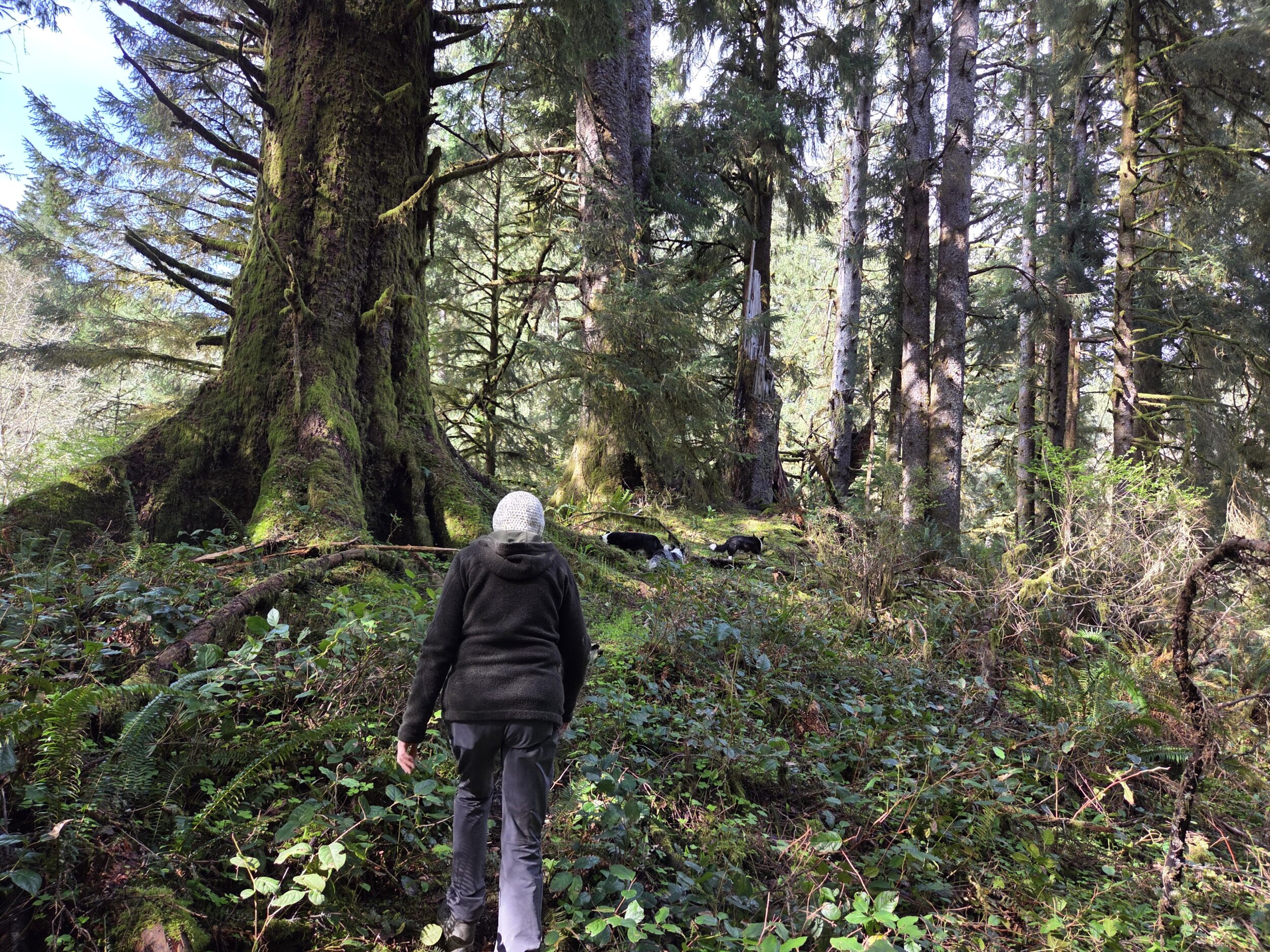
By SHAYLA ESCUDERO/Lincoln Chronicle
NEWPORT – JoAnn Barton is careful not to step on the small orange bodies of rough-skinned newts as she hikes through Yakona Nature Preserve. She looks down as her boots tread the forest floor, a mixture of pine cones, pine needles and grass.
Although she knows where she is going – one of her favorite places she calls the mossy knoll – her attention is easily diverted. She stops to stoop over scat on the trail, attempting to identify what animal it belonged to by its shape.
She looks up at the trees – spruce, hemlock, Douglas fir and says their names aloud, distinguishing each by the patterns in their bark.
When she sets off on the trail again, she asks questions. Not to any person, but to the trees. The same questions that always go unanswered. To the old grand trees, she wonders – what did you see? What was life like here when you were small?
“I can’t even describe the desire in my heart to learn their stories, what they witnessed over the course of their lifetime,” she says.
There are other questions too. Questions that guide the preservation efforts of the organization JoAnn and Bill Barton established. What was this forest like before uncareful human hands changed it? What if every inch of the 450-acre preserve was an old growth forest again?
Now the Barton’s $1.1 million-a-year nonprofit organization has five employees, 15 board members, and a growing scientific and educational arm that aims to inspire the next generation of environmental stewardship.

Starting out
“I was a real tomboy as a kid,” Barton says as she drives the winding road up Yakona, her three corgis eagerly stumbling over each other in the back seat. She grew up on the Gulf Coast, moving several times but always with a treehouse and a garden in the yard.
After marrying and having children in her twenties she moved with her husband to Oregon. He passed away shortly after their move. To a family reeling from loss, the community in Newport felt like arms wrapped in an embrace.
It would be decades later that she would marry Bill Barton, a successful trial lawyer. Because they met later in life, the couple considers Yakona the child they never had together.
Their project started out as an effort to create a public greenspace along the shores of Yaquina Bay. The space was earmarked for a choir to make music outdoors, but when that idea fell through, the preservation effort took shape.
“From the beginning we knew most of the native coastal fog belt forests west of the Coast Range had been lost to monoculture tree farms and that we wanted, over time, to return any parcels we own to diverse native forest,” Barton said.
The Bartons first acquired 77 acres of the peninsula in 2013, then began contacting adjacent landowners to see if they were interested in selling.
Buying the land was easy, JoAnn Barton said. Without a boat, there isn’t much a person could access because most of the surrounding land was privately owned. Owners were happy to get it off their hands because the lack of a road meant many weren’t able to access their property.
Little by little, the Bartons acquired 450 acres. The intention was to preserve the old growth forests but also create a space for education, science and art. A place for humans to connect with nature.
Now, the Barton’s Yakona Nature Preserve is one part “living laboratory” where forest temperatures are collected for climate change records. It’s where planting hundreds of native species to restore the forest’s biodiversity before colonization decimated tribal caretakers and extensive logging changed its character.
It’s a dream that’s 300 years in the making.

Preservation
Along the edges of Yaquina Bay grass sprouts from the wet ground. Wooden stakes with orange ties stand upright, supporting crab apple seedlings, still too wobbly to stand on their own and often the perfect meal for elk.
The goal is to return diversity to the forest, said Natalie Schaefer, the preserve’s executive director, who joined the nonprofit in 2022.

She proudly lifts a tarp to show rows of newly sprouting green leafy stems from soil. When they are large enough, they will be planted.
Hundreds of riparian plants have been placed over the last three years along the bay and throughout the marsh – red osier dogwood, spirea, red alder, cascara, twinberry. All native species.
Much of the forest was planted years ago for the eventual purpose of being logged, where Douglas fir are packed close to maximize space, making it so there are few other species in certain areas.
That’s part of the reason why the trail Barton calls the “mossy knoll” is her favorite, Barton said. Some of the trees must be hundreds of years old, giving her a window into what Yaquina Bay would have looked like.
Slowly, the preserve is thinning the plantation sites, abating invasive species and adding native trees, shrubs, grasses and flowers, and turning them back into old growth forests. It will take 300 years for that to happen.
“We don’t want it to be named after us, Barton said, “Yakona is our legacy and our way of giving back.”
History
The name honors the people who first lived on the land – the Yaqo’n people.
Part of the land restoration isn’t just bringing back the diversity of trees, it’s honoring and preserving the history of the first people who inhabited the area.
Robert Kentta, a Siletz tribal council leader and respected elder, is a Yakona board member and has helped establish the preserve’s educational resources on tribal history.
“Yaqo’n or Yaquina people have been there since time immemorial,” he said.

In the 1880s more than 50 villages inhabited the region from Cape Foulweather in the north to Beaver Creek in the south, and inland along the Yaquina Bay, he said.
The land and the first people who inhabited it is a story marred by colonial violence. European fur trappers seeking sea otter pelts brought disease that decimated the Yaqo’n population. Their numbers further dwindled when trappers massacred surviving tribal members in retribution for murders they did not commit.
“Yaquina John, later, a member of the Confederated Tribes of Siletz Indians, grew up on the Yaquina and he relayed the story of the 1832 retaliation by the Hudson Bay Company as a reason so few Yaquina people survived into the reservation period,” Kentta says.
More settlers came to Oregon after the Oregon Donation Land Act, and about 2.5 million acres of native lands were claimed by settlers, according to the Confederated Tribe of Siletz Indians. Tribes mostly in the path of settlement were made to sign treaties ceding their lands and moving to a permanent, established reservation. Over 30 different tribes and bands that spoke 10 languages, some from as far as Washington and California, were relocated to a 100-mile stretch of coastline called the Coast Reservation, Kentta said.
Settler interest in oyster harvesting caused more turmoil.
In 1865, President Andrew Johnson signed an order opening the Yaquina strip to non-Indian settlement without any treaty negotiations or agreement from the tribes, taking more than 200,000 acres out of the center of the reservation, Kentta said.
Land was further stripped from Indigenous caretakers when suddenly the remaining lands required property tax payments, forcing much of the land still owned by tribal members into foreclosure and into the hands of settlers.
In the 1950s the tribe was “terminated” losing rights to their land, traditional fishing and hunting grounds and homes. Over 20 years later, the confederated tribes of Siletz won back their sovereign rights and were given back 3,600 acres of forested land by the Bureau of Land Management.
It is important that the Yakona Preserve help tell both the story of the Yaqo’n people and the Siletz Indians, because they are not a separate history, Kentta said.
“It’s interesting talking to people who don’t realize the old growth forests that used to be here,” he said.
In telling the story of land and people, there is a larger understanding of why the forests lack diversity and resources are not in abundance as they once were. It’s the reason why sea otters and native oysters were depleted. The people who colonized this land were not always good caretakers of it, he said.
“There was a story of endless resources, but they have always been finite,” he said.

Boom and bust
When Schaefer is taking a group on a hike, she likes to encourage its members to imagine what they would have been wearing if they were in the 1800s, when there were homes, docks and a school along the peninsula. She passes by the few remnants of that life– two 30-foot wells.
“It was a boom, and then a bust,” Schaefer said.

A San Francisco entrepreneur, Colonel T. Egenton Hogg, aspired to lay railroad tracks from Corvallis to the coast. He originally had eyes on Newport, but when residents rejected his offer to buy the waterfront, he went four miles upriver to start his own town and named it Yaquina City.
Trains moved daily from Corvallis to Yaquina City and the town had a school, sawmill, canneries, a telegraph office, a hotel, church, docks to handle freight and a saloon.
The city had a busy port with over 100 ships leaving Yaquina with oysters and other goods. Hogg’s steamer named Yaquina City shipped products to San Francisco in a record 37 hours – beating out Portland.
But the success was short-lived. The ship sank, as did a second, bankrupting Hogg.
Through the years, Newport continued to grow while Yaquina City dwindled, and the once plentiful native oysters vanished from overharvesting.
Commercial logging became the backbone of the local economy and further shaped the land. When transportation of logs shifted from railway to trucking, tracks between Toledo and Yaquina City were removed, rendering it a ghost town.
And the forested lands were further changed – trees were planted close together to maximize production and forests clear cut for production.
Growing
When the Bartons purchased their initial acreage on the peninsula, more than half of it had been clear cut for commercial harvest. So, they began their efforts by planting native flowers, trees and shrubs along the clear cuts.
The preserve now has five staff and hundreds of children partaking in educational programs.
Originally created to be open to the public, the preserve only offers guided entry after a small fire served as a “wake up call.” Still, over 1,000 people came to the preserve last year through guided entry.
In 2022, the preserve received $102,000 in grants and $647,000 in individual donations. By 2024, the grants quadrupled to $419,000 and individual donations totaled $716,000, according to its annual reports.
A partnership with McKenzie River Trust set a permanent protection over the lands through a conservation easement and a forest master plan guides their goals to restore habitat.
Just in the past two years the preserve has gone from 340 acres to 450 acres and there are efforts to secure another 30 acres of land recently owned by Weyerhaeuser. With expanding preservation efforts, educational programming is also keeping pace.
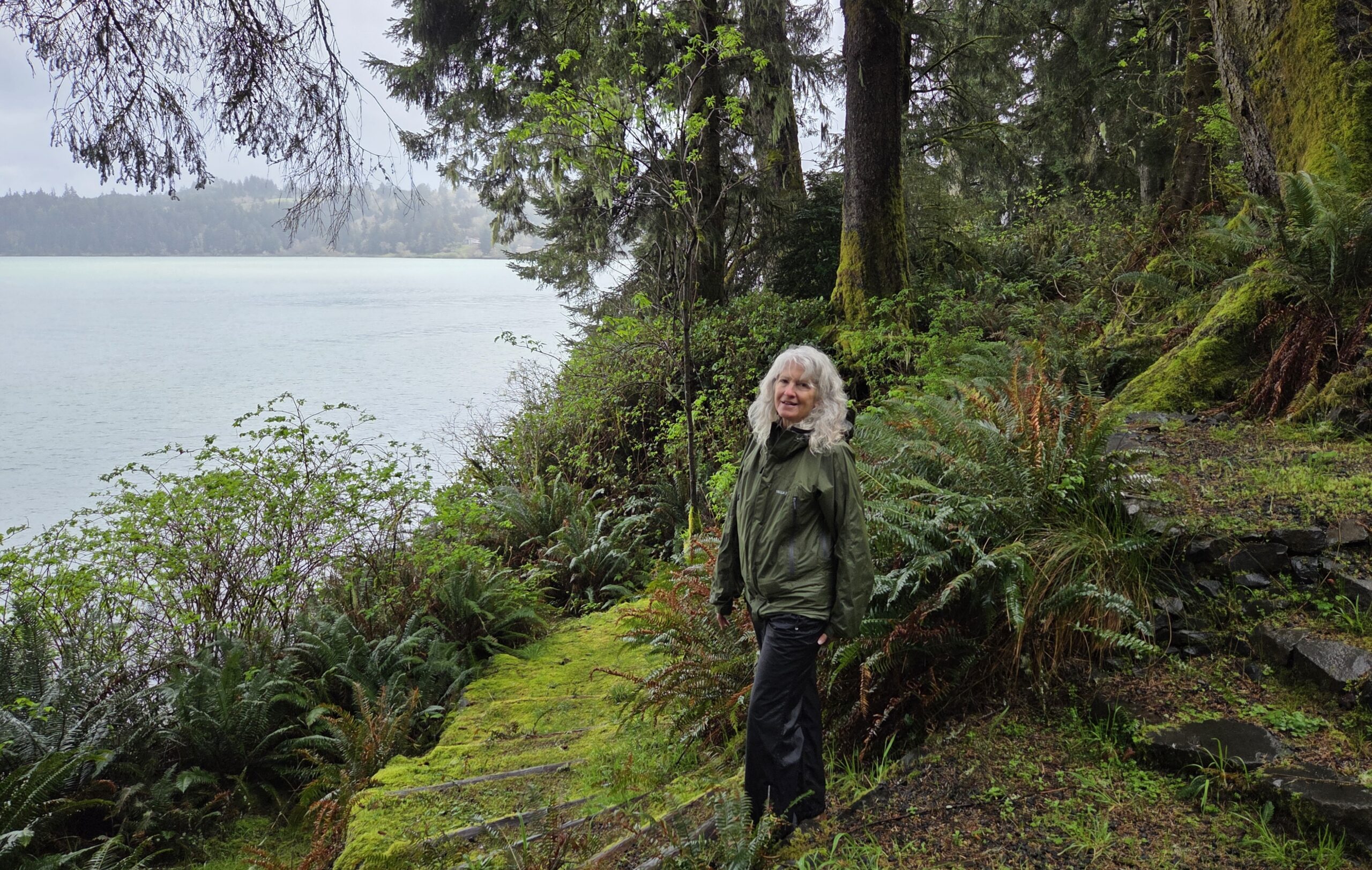
Education
Inside a shed, rows of backpacks with spy glasses and compasses on key rings hang across the wall. Animal skulls line up neatly across a shelf. Below, workbooks for climate change monitoring, wetlands, sustainability and nature journaling sit next to boxes of pine cones.
Some of the pages encourage students to look closely at the world around them – to compare the floors of recently cleared forests to older forests, to test the pH of different bodies of water and identify plants and insects.
From the beginning, the Bartons knew that they wanted education to be included with the preservation efforts. But that dream wasn’t possible until the hire of an executive director, Barton said.
There’s scientific and art education for all ages, Schaefer said. College students will use the forest for research projects, children come to do hands-on learning, and the organization itself has data it collects.
In 2024, 18 preschoolers, 207 elementary students and 394 middle and high school students participated in the preserve’s education programs, according to the nonprofit’s annual report. The preserve also has a partnership with Siletz Valley Schools, Schaefer said, which emphasizes cultural and ecological knowledge.
Third-grade students raise and release fish, fifth-graders study river/forest ecology, middle grades will forage and prepare Native first foods, ninth-graders explore historical human uses of both rivers, 10th grade students monitor climate, and 10-12th graders conduct guided research and develop service projects.
Throughout the 450 acres, there are green flags that denote research areas. Bobbing down from trees, there are 20 temperature monitors used to collect data to study climate change.
“It’s a living laboratory,” Schaefer said as she viewed temperature data from an app on her phone.
There are also 25 wildlife webcams used for research and various apps Yakona staff have on their phones that allow them to catalog species, the sounds they make and other characteristics.
“Education was always part of the purpose of Yakona,” Barton said.
For the Bartons it touches upon a philosophy they hold close – to know and connect with nature will inspire future generations to love and protect it.
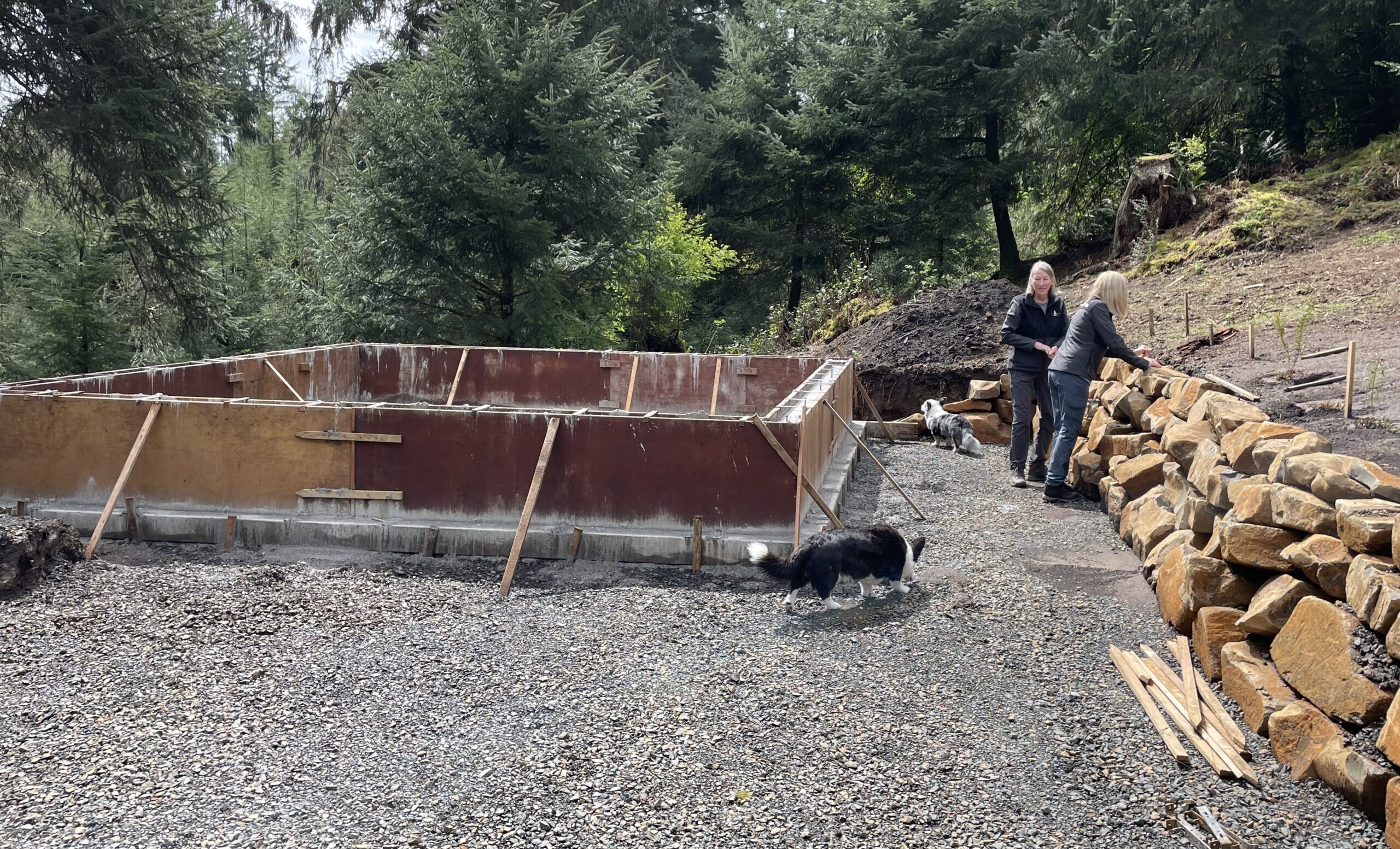
Bartow’s studio
Along a piece of flat land, rocks are stacked like bricks along a flat patch of dirt await four walls and a roof for a studio.
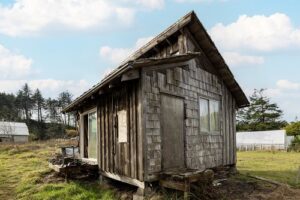
It once belonged to the late Rick Bartow, a renowned contemporary Native American artist. Best known for his large pastel drawings, the Newport artist was also a prolific painter, sculptor and printmaker. His cedar sculptures, We Were Always Here, were commissioned by the Smithsonian National Museum of the American Indian, which rise above the National Mall.
The studio will be removed from Bartow’s ancestral home, taken apart and reconstructed at Yakona, where it will be used to house new artistic ventures, local artist workshops and classes that blend art and nature.
“We are deeply honored to preserve Rick Bartow’s art studio and create a space that carries forward his commitment to art education,” Barton said. “This project is a living tribute to his vision, ensuring his legacy continues to inspire generations to come.”
Embracing mystery

When Barton is in the forest, she loses track of time. She passes by blooming skunk cabbage, moss covered elk bones reclaimed by the forest floor, and striped fungus that hangs on tree trunks like shelving.
Then, something else worth stopping for – a snag. The broken tree is missing its limbs but still upright, a jagged trunk and some smaller, young tree growing from it.
“Snags fascinate me and this one has to be my favorite in Yakona,” Barton says as she points to the dark-wooded tree.
“It’s the idea that something once alive, sheltered and nurtured, communicated under the soil and supportive organisms and now it’s dead, disintegrating but it’s still supporting life,” she said.
Barton is drawn to the circles that nature draws between life and death, which are abundant at Yakona.
Some of the efforts of the preserve seem forward looking – monitoring forest temperatures to study climate change and educating youth in science and art so that they can become good stewards of the environment.
Others look to the past. Honoring history and understanding it to not repeat the same mistakes.
There is a master plan that lays out what steps and goals are needed to turn back the land to old growth forests. But it’s like planting seeds when you know you won’t be there to see sprouts. And Barton, although she wonders, and asks her questions to the trees, has made peace with this fact.
“There’s two things Yakona has taught me – patience and mystery,” Barton said.
- Shayla Escudero covers Lincoln County government, education, Newport, housing and social services for Lincoln Chronicle and can be reached at Shayla@LincolnChronicle.org





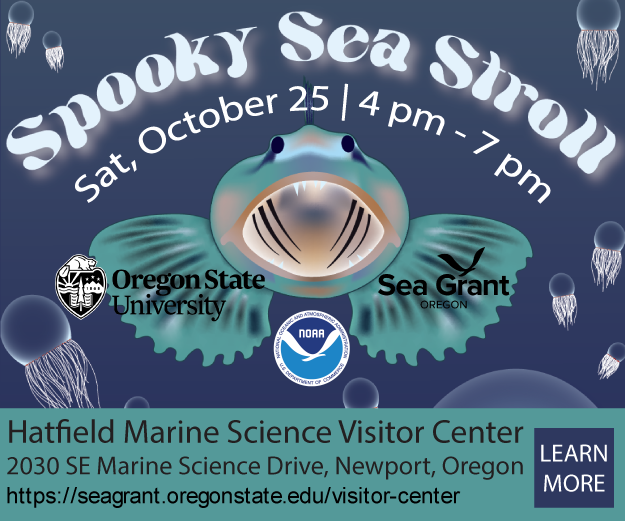







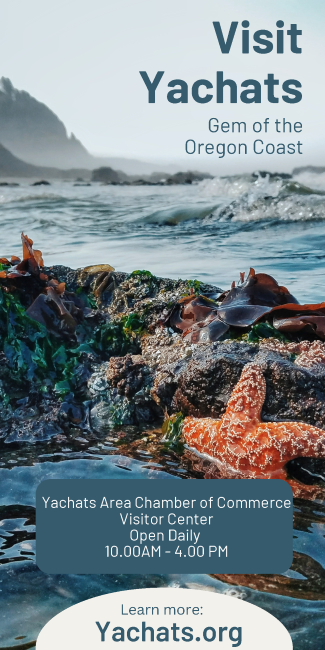







So many details that I may have missed it but where exactly is this? I’d love visit.
Thursday, May 29, 2025 ~ 10:00 AM – 1:30 PM
Docent Orientation
Carol, et.al., here is an event coming up at Yakona to help train volunteers~
“We will hike approximately three miles on well-established trails and experience elevation loss/gain of 250 feet multiple times. We will make multiple stops to discuss points of interest and history. We can expect to be on the trails for about 3 hours. Hike Difficulty: Moderate”
Register online here:
https://www.yakonaoregon.org/events/docent-orientation-1
The Barton’s are great people doing inspiring things!
I’m glad you covered this story so well. I’m deeply appreciative of the work the Barton’s have done.